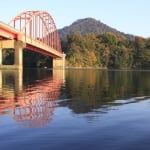Name: Kibitsu Shrine
Address: 931 Kibitsu, Kita-ku, Okayama-shi, Okayama
Official Website: http://www.kibitujinja.com/
Discover Japan’s sacred power spots: 5 must-visit energy sites in Okayama’s ancient Kibi Province
table of contents
[x] close
Discover Japan’s sacred power spots: 5 must-visit energy sites in Okayama’s ancient Kibi Province
- 2. Mogami Inari-san Myokyoji, A Power Spot of Giant Stones and Harmonized Shinto-Buddhist Belief
- 3. Isonokami Futsumitama Shrine, Trace of Pottery and Tatara Ironworking at the Megalithic Site
- 4. Tamahime Shrine, a Shrine of the Sea and Megalith Faith for Princess Otohime
- 5. Iwai Falls, A Scenic Spot Where You Can See the Waterfall from Behind
- ◎ Summary
Kibitsu Shrine is a prestigious shrine and ichinomiya (chief shrine) along the Sanyodo region, dedicated to the deity Okibitsuhiko-no-Okami. According to the Kojiki and Nihon Shoki, this deity was a member of the imperial family who pacified and developed the ancient Kibi region. Legend has it that he defeated a demon named Ura. The story of him slaying Ura, who lived on Onigashima (Demon Island), along with three retainers, is said to be the origin of the Momotaro legend. The cauldron said to have calmed Ura’s spirit remains at Kibitsu Shrine to this day.
A famous and unique ritual at Kibitsu Shrine is the Kamanari Shinji (Boiling Cauldron Oracle), which uses that very cauldron. In this rare divination ceremony, the sounds made when boiling water and scattering brown rice are interpreted as signs of fortune or misfortune, depending on pitch and volume. This practice is said to be linked to Japan’s traditional metal casting culture. As a legendary source of power and spiritual energy in Okayama, Kibitsu Shrine remains one of the area’s most popular spiritual spots. Visit Kibitsu Shrine to experience the sacred power and encounter over a thousand years of history and legend.
2. Mogami Inari-san Myokyoji, A Power Spot of Giant Stones and Harmonized Shinto-Buddhist Belief
Okayama is home to many temples with ancient legends. Among the most prominent is Mogami Inari, with its enormous 27-meter-high torii gate welcoming visitors. The full name is Mogami Inari-san Myokyoji, and as the name suggests, the temple and torii coexist in a strong expression of shinbutsu-shūgō—the syncretism of Shinto and Buddhism. Between the Mogami Shrine and its inner sanctuary lies a massive rock called Hachijōiwa ("Eight Tatami Mat Rock").
Mogami Inari boasts a history of over 1,200 years. It is said to have originated in 752 when prayers were offered at Hachijōiwa to heal Emperor Kōken’s illness. Later, it is said Emperor Kanmu was also healed, leading to the foundation of Ryuozan Jingūji Temple on the site. Though the temple was burned down during the Sengoku period, it was rebuilt in 1601 as Mogami Inari.
Today, Mogami Inari is considered one of Japan’s three great Inari shrines, along with Fushimi Inari in Kyoto and Toyokawa Inari in Aichi. This sacred site, rooted in the harmony between gods and Buddhas and centered on giant stones, continues to be a spiritual focal point through the ages—from ancient times through the warring states era and beyond.
Name: Mogami Inari-san Myokyoji
Address: 712 Takamatsu Inari, Kita-ku, Okayama-shi, Okayama
Official Website: https://www.inari.ne.jp/
3. Isonokami Futsumitama Shrine, Trace of Pottery and Tatara Ironworking at the Megalithic Site
Isonokami Futsumitama Shrine, located in Akaiwa City, is a deeply historic power spot. The current enshrined deity is Susanoo-no-Mikoto, but originally, the divine spirit called Futsumitama was believed to reside in the sacred sword Totsuka-no-Tsurugi, the legendary blade Susanoo used to slay the Yamata-no-Orochi. The main sanctuary sits about 400 meters behind the main hall at the mountaintop, where a megalithic site lies beyond—off-limits to visitors.
This shrine is ranked 2nd among 128 shrines in the Bizen Province General Shrine Name Register. Local legend tells that the Kibi region, where the shrine is located, once thrived with superior technology surpassing even the Yamato court. The place name Hajikata refers to the birthplace of Bizen ware pottery and the profession of ceramic artisans. The surrounding area was also rich in iron sand and copper, making it a vital center for ancient tatara ironworking. For people of the past, this was a sacred site for producing iron tools—a true power spot.
Name: Isonokami Futsumitama Shrine
Address: 1448 Isonokami, Akaiwa City, Okayama Prefecture
Official Website:http://www.akaiwa-kankou.jp/spot027.html
4. Tamahime Shrine, a Shrine of the Sea and Megalith Faith for Princess Otohime
Tamahime Shrine in Tamano City is a power spot tied to marine and megalithic worship. The deity enshrined here is Princess Otohime, a legendary figure from the tale of Ryugujo and Urashima Taro. She is a beautiful sea goddess revered in marine faith. Within the grounds stands a sacred 12-meter-tall megalith known as Tateishi, surrounded by myths.
In the past, this land was once a bay. From a massive rock located here, a ball of fire burst out and flew to three different locations. These places—Garyu Inari Shrine Okumiya (in the mountain’s center), Kannon of Saidaiji, and Ushimado—are all sacred spots. The fiery phenomenon from the megalith shows how it was revered as a divine object. The shrine also offers a charm called “Tsuna,” a symbolic rope used to support ships as they are first launched into the water—apt for a sea deity.
Name: Tamahime Shrine
Address: 5-1-17 Tama, Tamano City, Okayama Prefecture
Official Website:http://tamanokankou.com/kankou/tamahime
5. Iwai Falls, A Scenic Spot Where You Can See the Waterfall from Behind
Iwai Falls is a mystical power spot located in a deep forest at 830 meters above sea level on the southern foot of Mt. Mikuni, in northern Okayama Prefecture near the border with Tottori. Surrounded by nature, it's famous for the unique experience of being able to enter beneath a large rock and view the waterfall from behind.
The falls are accessible by walking about 400 meters on a trail from the parking area. The waterfall stands about 10 meters tall and 6 meters wide. At its front lies “Meisui Iwai,” a spring selected as one of Japan’s Top 100 Famous Waters. Locals also cherish it as “Water of Fertility,” believed to bring blessings for children.
The best time to visit Iwai Falls is from the fresh green season through summer, though many tourists also come in autumn to enjoy the fall foliage. During summer festivals, visitors can enjoy “nagashi somen” (flowing somen noodles) using the cool spring water—an exciting and refreshing experience. Aside from its reputation as a power spot, the area is also appreciated for offering an enjoyable hiking environment in the midst of nature.
Name: Iwai Falls
Address: Nakatsugawa, Kamisaibara, Kagamino Town, Tomata District, Okayama Prefecture
Official/Related URL: https://goo.gl/dfs5G9
◎ Summary
Ancient Kibi Province in Okayama, steeped in myths and legends, is home to many power spots. The Kibitsu Shrine, where the Great Kibitsuhiko-no-Ōkami is enshrined, is a prestigious shrine of the Sanyōdō region and is even a national treasure. Myokyoji Temple at Mt. Inari features the majestic 27-meter-high torii gate and is centered around the giant Yajo-iwa boulder. Ishigami Futsumitama Shrine is the main shrine of Bizen Province and is also regarded as a sacred power spot where Bizen pottery and ancient iron-making (tatara) originated. Tamahime Shrine in Tamano City, dedicated to the sea deity, is another power spot known for its megalithic worship.
With so many ancient power spots rich in history, culture, and craftsmanship, wouldn’t you love to visit Okayama’s old Kibi Province? Rejuvenate yourself by visiting these five carefully selected power spots.
RELATED ARTICLES
REGIONS
CATEGORIES
FEATURED ON Okayama
-
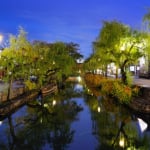
Planning a Date in Okayama? Don’t Miss These 5 Handpicked Recommended Spots
-
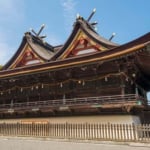
[4-day holiday in the Chugoku region] Summary of summer outing spots ◎ Enjoy the great outdoors!
-

[2021 Edition] 15 Sunflower Fields Across Japan to Visit This Summer!
-

Top 6 Tourist Attractions in Kasaoka City, Okayama – A Journey Through Flowers and Horseshoe Crabs
-
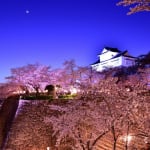
Okayama Prefecture’s Tsuyama City: Proud of Its Nature and History! 6 Recommended Tourist Spots
MOST POPULAR ON Okayama
-
 1
1Doha: Must-see Attractions in the Capital of Qatar
-
 2
2Toronto: 10 Things to do in this Picturesque Canadian City
-
 3
3Amarillo: A City Famous for It’s Amazing Canyons, Great History and Music
-
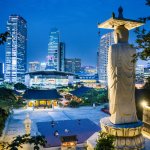 4
4South Korea: Dazzling Scenery, Rich Culture and Fascinating History
-
 5
5Kuwait: A Country in Middle East Asia Famous for Hot Sand Dunes and Stunning Cityscape



